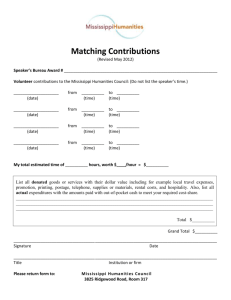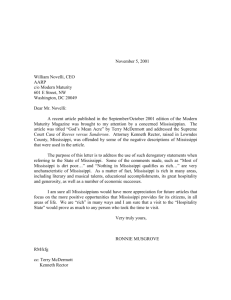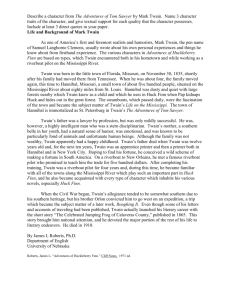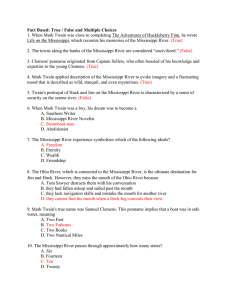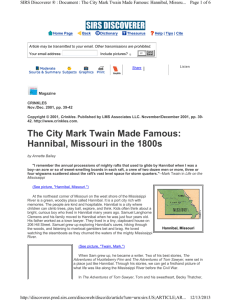theadventuresoftomsa..
advertisement
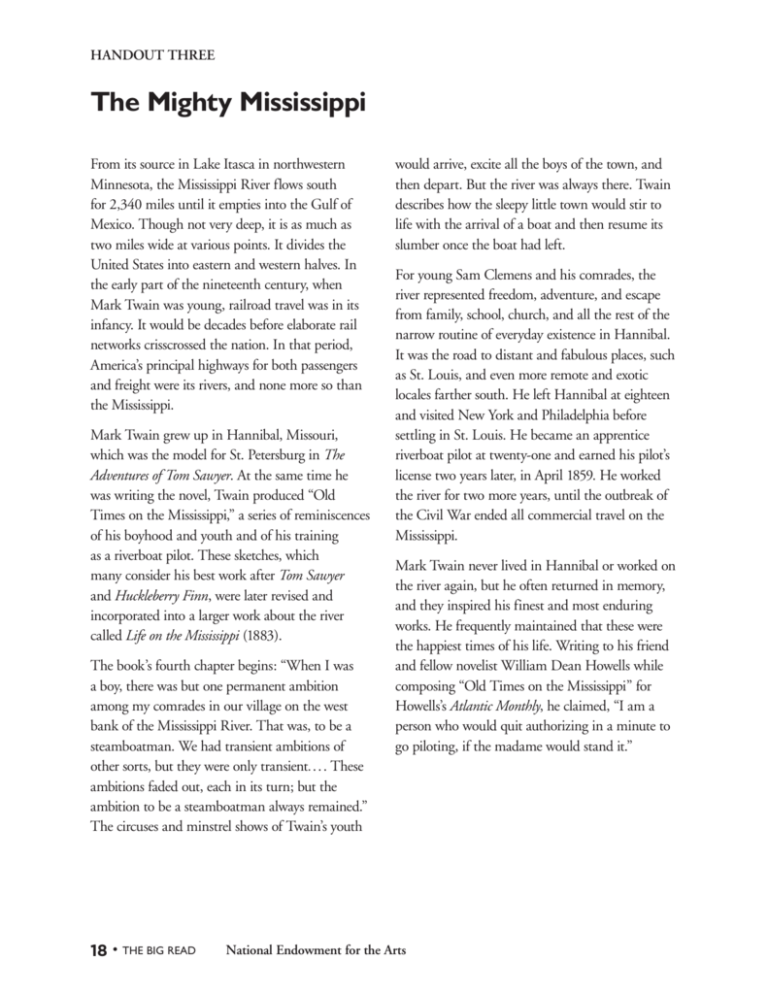
HANDOUT THREE The Mighty Mississippi From its source in Lake Itasca in northwestern Minnesota, the Mississippi River flows south for 2,340 miles until it empties into the Gulf of Mexico. Though not very deep, it is as much as two miles wide at various points. It divides the United States into eastern and western halves. In the early part of the nineteenth century, when Mark Twain was young, railroad travel was in its infancy. It would be decades before elaborate rail networks crisscrossed the nation. In that period, America’s principal highways for both passengers and freight were its rivers, and none more so than the Mississippi. Mark Twain grew up in Hannibal, Missouri, which was the model for St. Petersburg in The Adventures of Tom Sawyer. At the same time he was writing the novel, Twain produced “Old Times on the Mississippi,” a series of reminiscences of his boyhood and youth and of his training as a riverboat pilot. These sketches, which many consider his best work after Tom Sawyer and Huckleberry Finn, were later revised and incorporated into a larger work about the river called Life on the Mississippi (1883). The book’s fourth chapter begins: “When I was a boy, there was but one permanent ambition among my comrades in our village on the west bank of the Mississippi River. That was, to be a steamboatman. We had transient ambitions of other sorts, but they were only transient. . . . These ambitions faded out, each in its turn; but the ambition to be a steamboatman always remained.” The circuses and minstrel shows of Twain’s youth 18 sTHE BIG READ would arrive, excite all the boys of the town, and then depart. But the river was always there. Twain describes how the sleepy little town would stir to life with the arrival of a boat and then resume its slumber once the boat had left. For young Sam Clemens and his comrades, the river represented freedom, adventure, and escape from family, school, church, and all the rest of the narrow routine of everyday existence in Hannibal. It was the road to distant and fabulous places, such as St. Louis, and even more remote and exotic locales farther south. He left Hannibal at eighteen and visited New York and Philadelphia before settling in St. Louis. He became an apprentice riverboat pilot at twenty-one and earned his pilot’s license two years later, in April 1859. He worked the river for two more years, until the outbreak of the Civil War ended all commercial travel on the Mississippi. Mark Twain never lived in Hannibal or worked on the river again, but he often returned in memory, and they inspired his finest and most enduring works. He frequently maintained that these were the happiest times of his life. Writing to his friend and fellow novelist William Dean Howells while composing “Old Times on the Mississippi” for Howells’s Atlantic Monthly, he claimed, “I am a person who would quit authorizing in a minute to go piloting, if the madame would stand it.” National Endowment for the Arts


